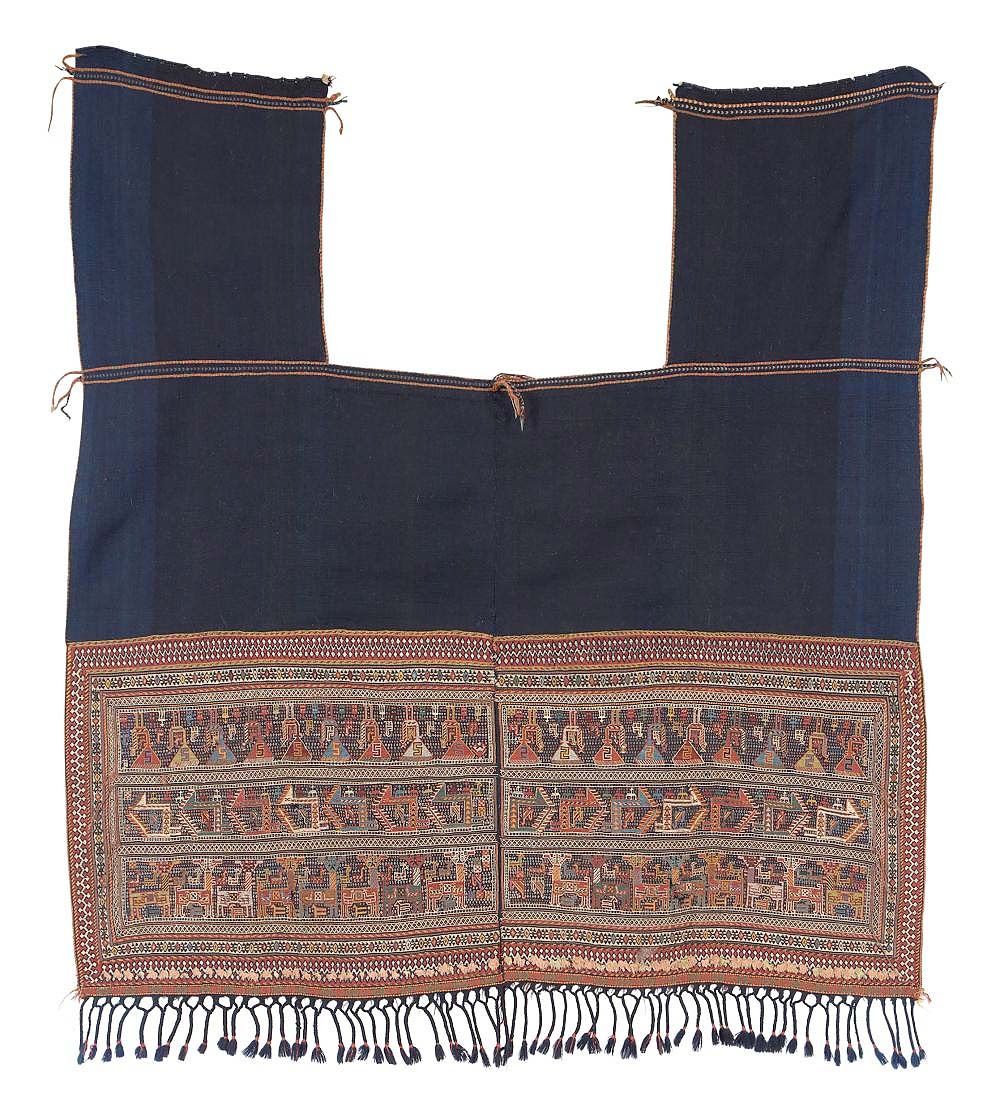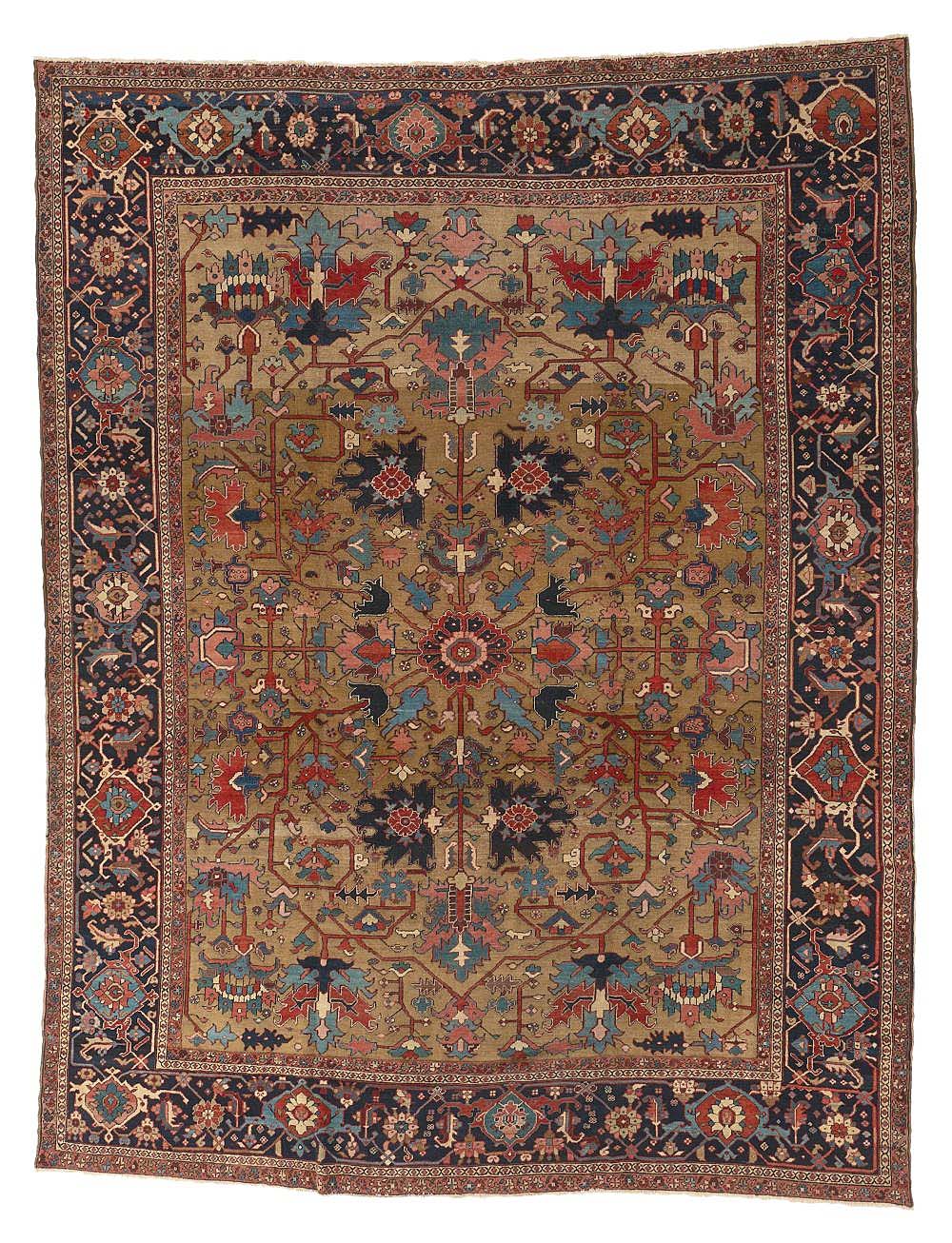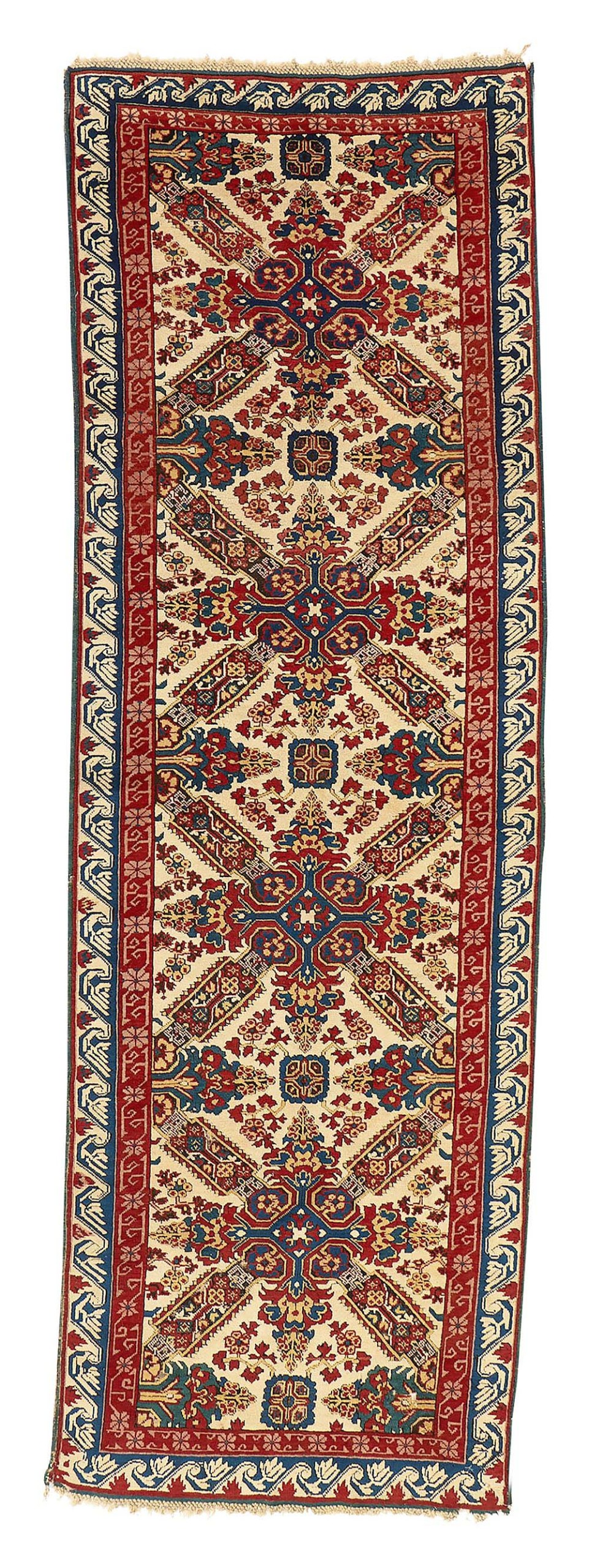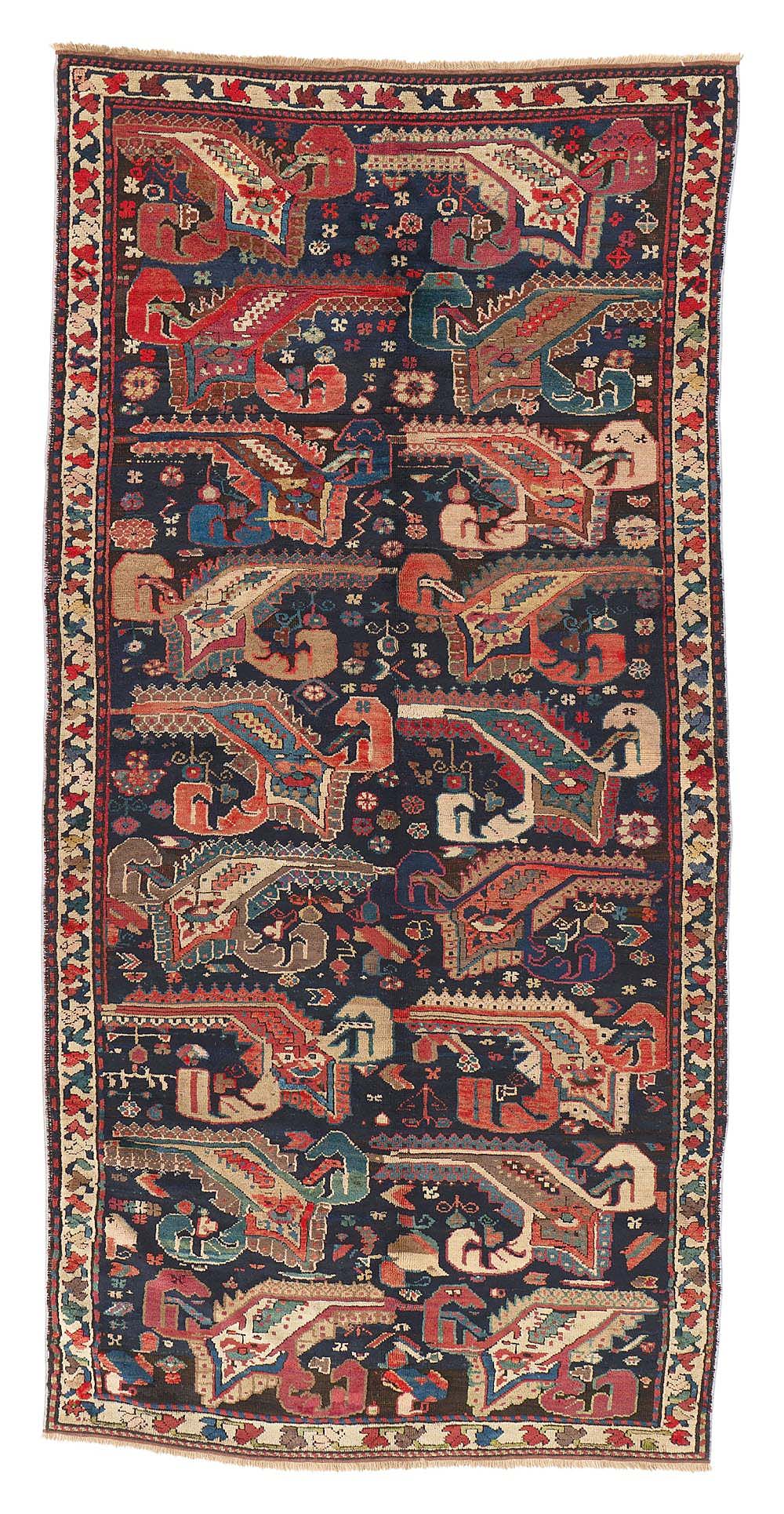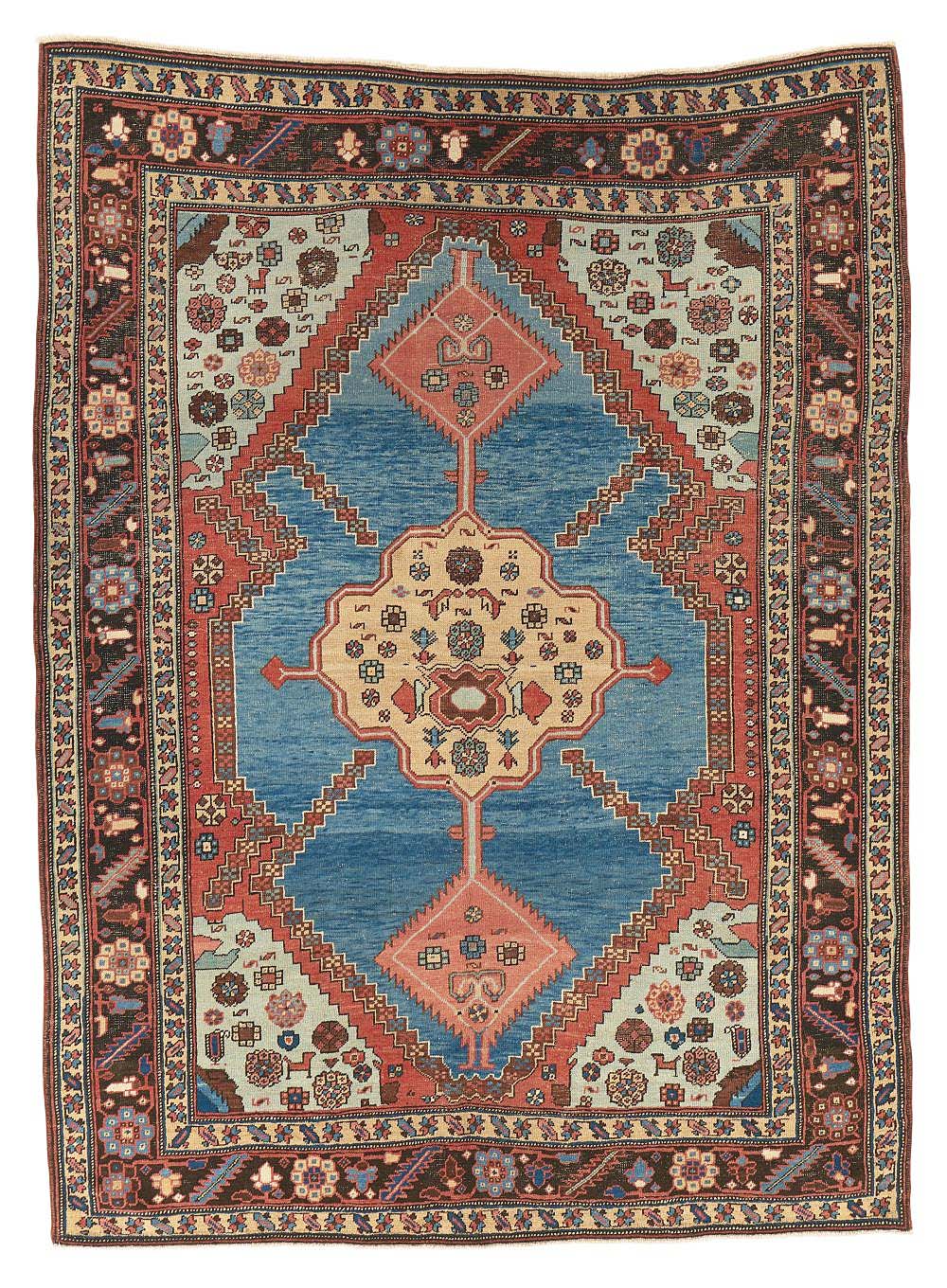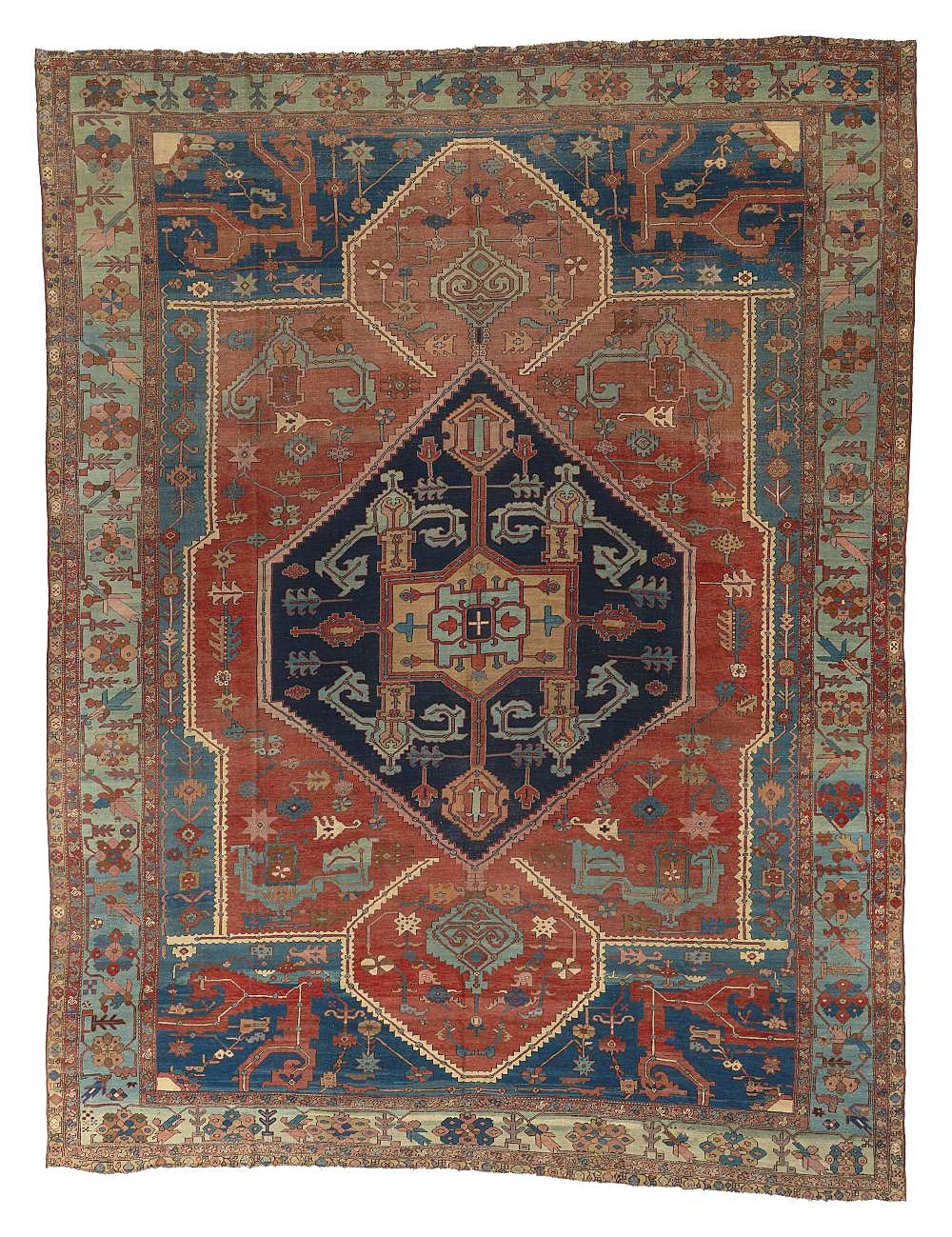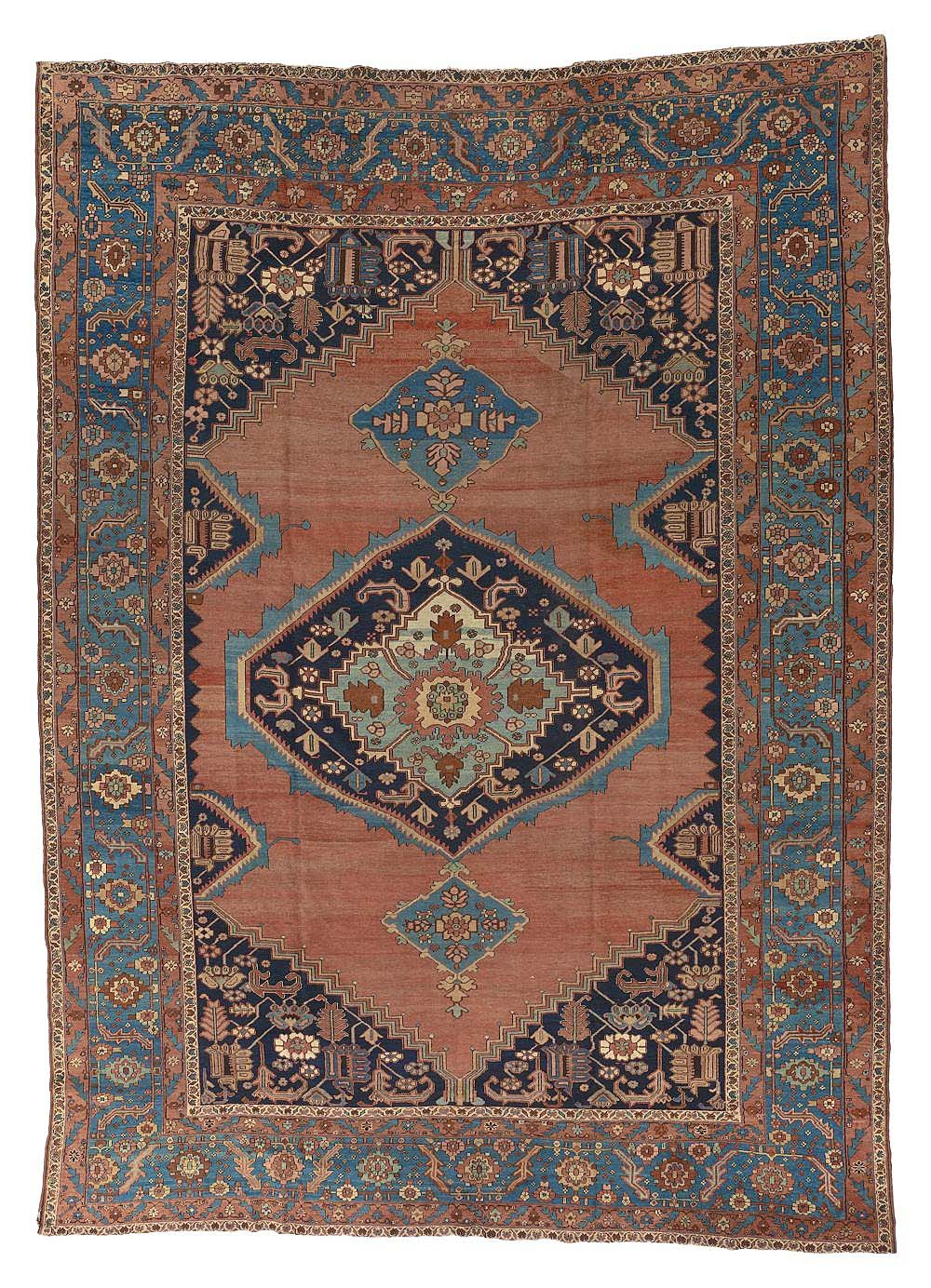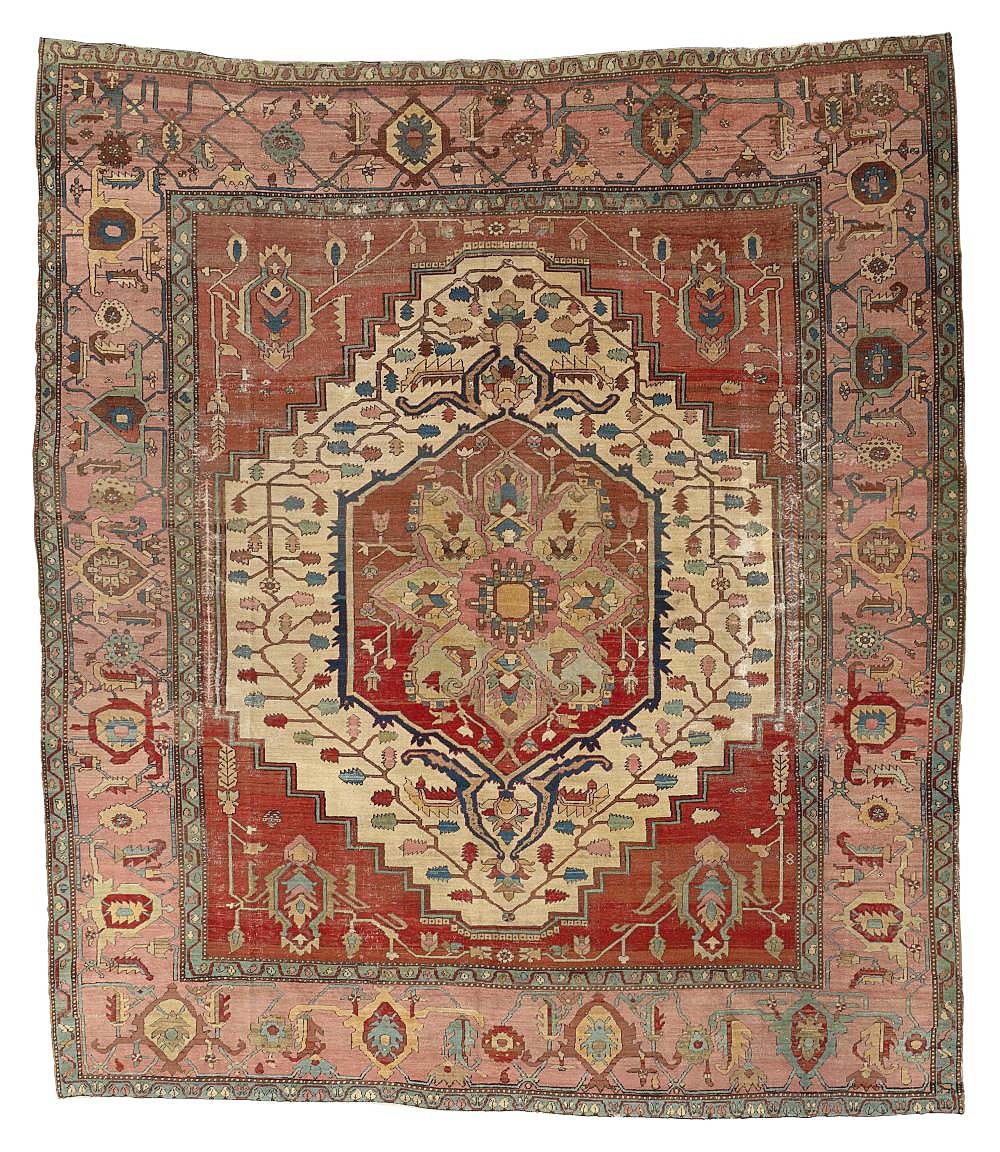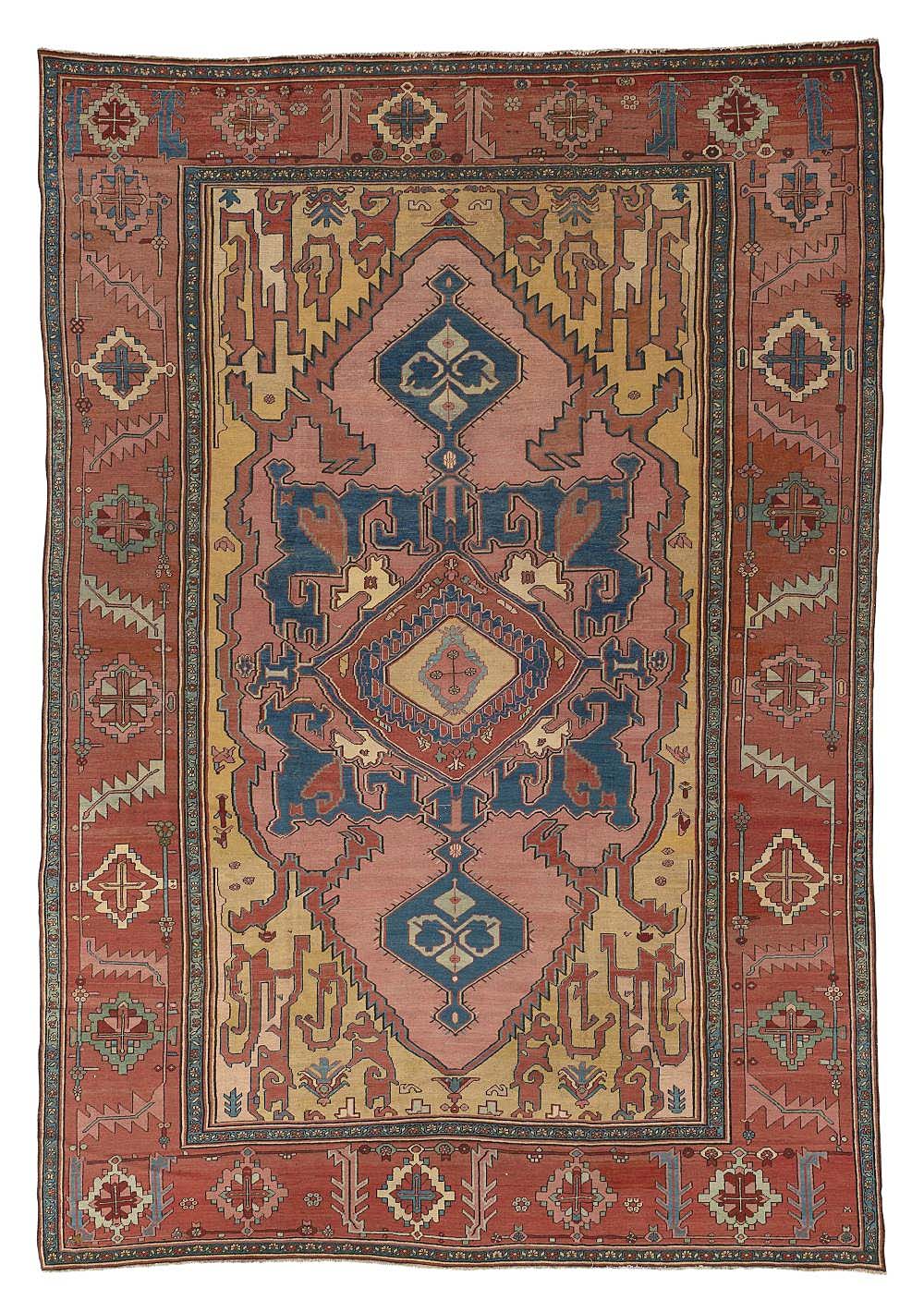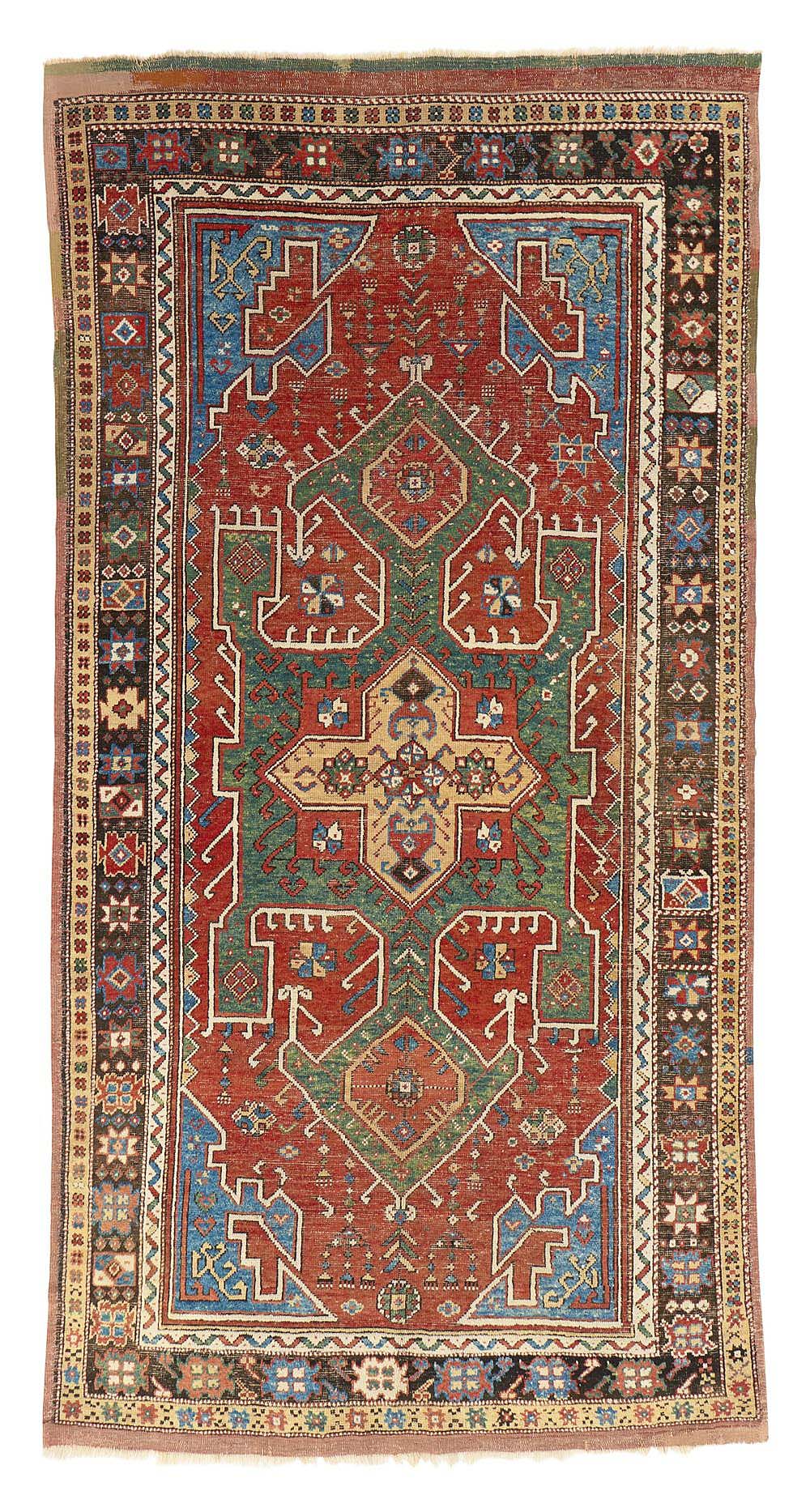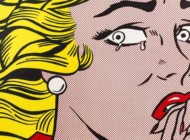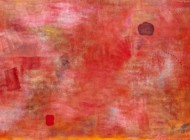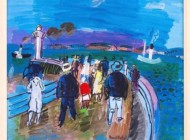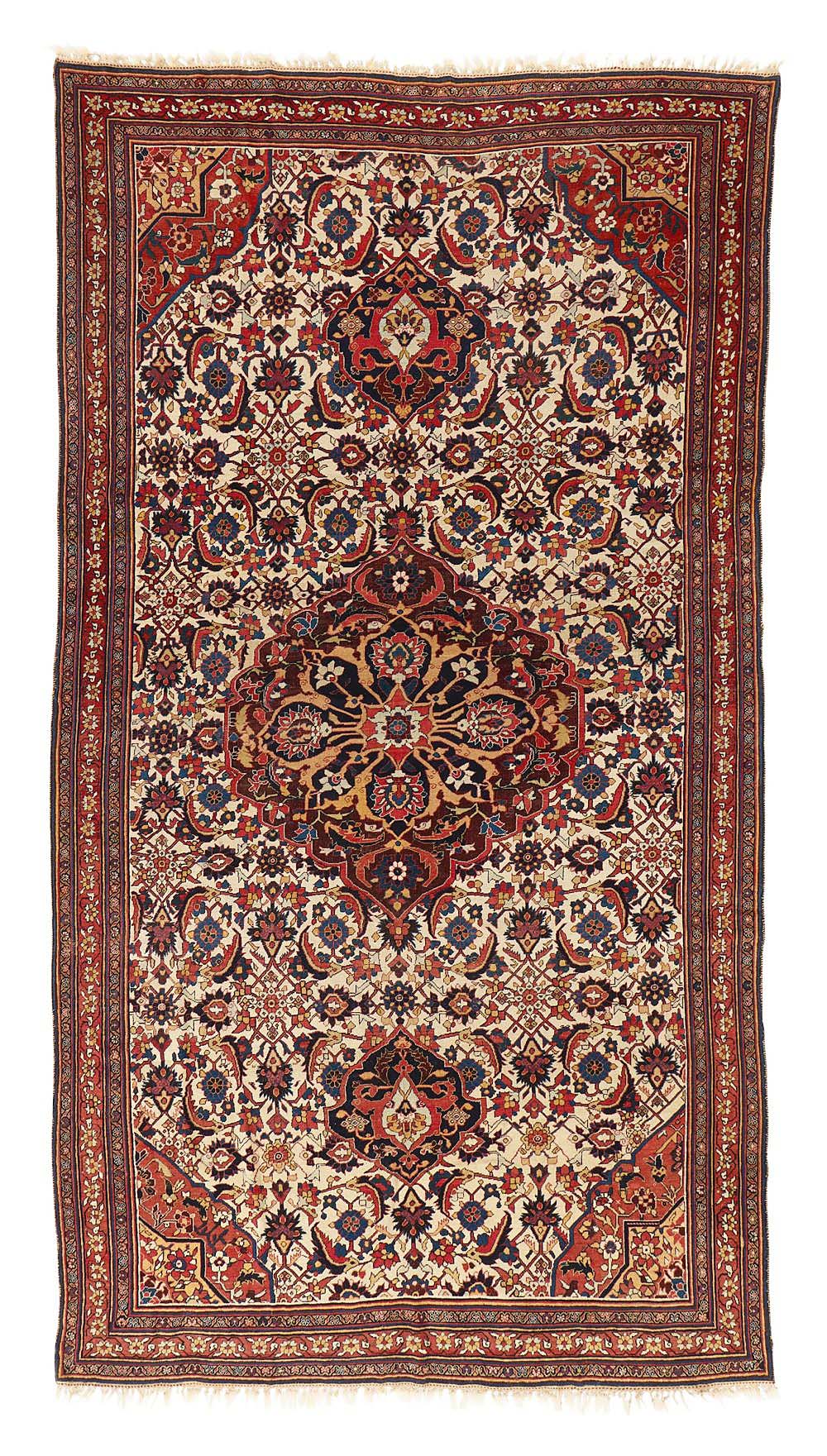
An American buyer fended off competition to win the sale’s first and top lot, this circa 1850 Qashgai carpet for $25,000 ($8/12,000).
Review by Madelia Hickman Ring
BOSTON — “We saw broad and significant worldwide interest in the rugs, with bidders participating from across more than 44 states and 28 countries,” said Michael B. Grogan, founder of Grogan & Company. “With a 91 percent sell-through rate, the vast majority of pieces met or exceeded their pre-sale estimates. This auction continues our long tradition of presenting important single-owner rug collections and connecting them with discerning collectors around the globe.”
Grogan was commenting on the success his firm had with the rug collection of Michael Hertzberg, a 148-lot auction that took place on October 1. A lifelong collector, Hertzberg was, the firm noted, celebrated for his refined taste and passion for quality; the collection on offer featured exceptional room-sized carpets and rare collector rugs from Persia, the Caucasus, and other areas; the auction achieved a total of $641,187.
The sale’s top price of $25,000 was achieved by a 10-foot-4-inch-by-5-foot-7-inch Persian Qashgai carpet that dated to circa 1850. The auction catalog drew comparisons with one illustrated in Woven Gardens by David Black and Clive Loveless (London, 1979), and it was purchased by a bidder in the United States.
The top price was followed closely at $23,750 by a Persian Bakshaish rug that measured 6 feet 2 inches by 4 feet 10 inches and dated to circa 1875. One lot later, another circa 1875 Persian Bakshaish of slightly different size (7 feet by 5 feet 2 inches) brought $20,000.
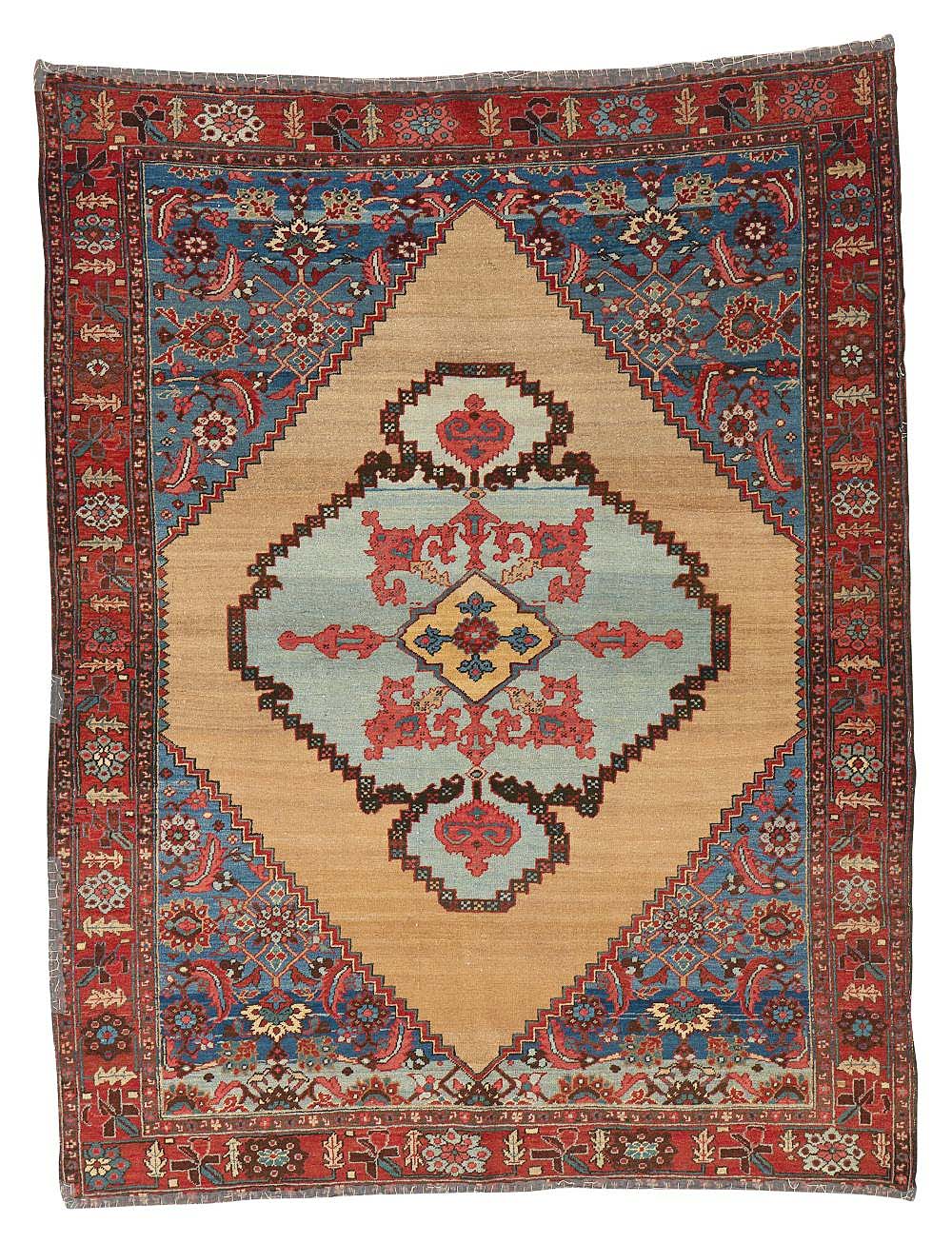
Earning $23,750 and a second-place finish overall was this circa 1875 Persian Bakshaish rug ($5/10,000).
Other late Nineteenth Century carpets dominated the leaderboard as well. Meeting its $15,000 high estimate was a circa 1875 Persian Serapi that was larger than the previous high flyers and took up 13 feet 5 inches by 9 feet 9 inches of floor space.
Perennially favored by collectors, Heriz carpets saw strong results, with all five examples in the sale selling within or exceeding their estimates. The group, all of which dated to the last quarter of the Nineteenth Century or circa 1900, was led at $12,500 by one measuring 15 feet 6 inches by 12 feet; it was followed in price by a 13-foot-9-inch-by-9-foot-8 inch example ($11,875), another approximately 12 by 10 feet ($11,250) and a fourth roughly 12 feet by 9 feet ($10,625). An elongated Heriz that, at 14 feet 7 inches by 5 feet 9 inches could double as a runner, brought up the group at $5,000.
More than half the sale was comprised of rugs from the Caucasus and a circa 1875 Karatchoph Kazak prayer rug in a double niche design led the group, realizing $10,625. Of similar age but in a runner form, an approximately 9-by-3-foot Seychour rug met its $10,000 high estimate. Also in the sale, a circa 1875 Shirvan rug ($9,375), a circa 1850 Blossom carpet ($9,375), a two-medallion eagle Kazak ($8,125) and a Dragon soumac carpet ($8,125).
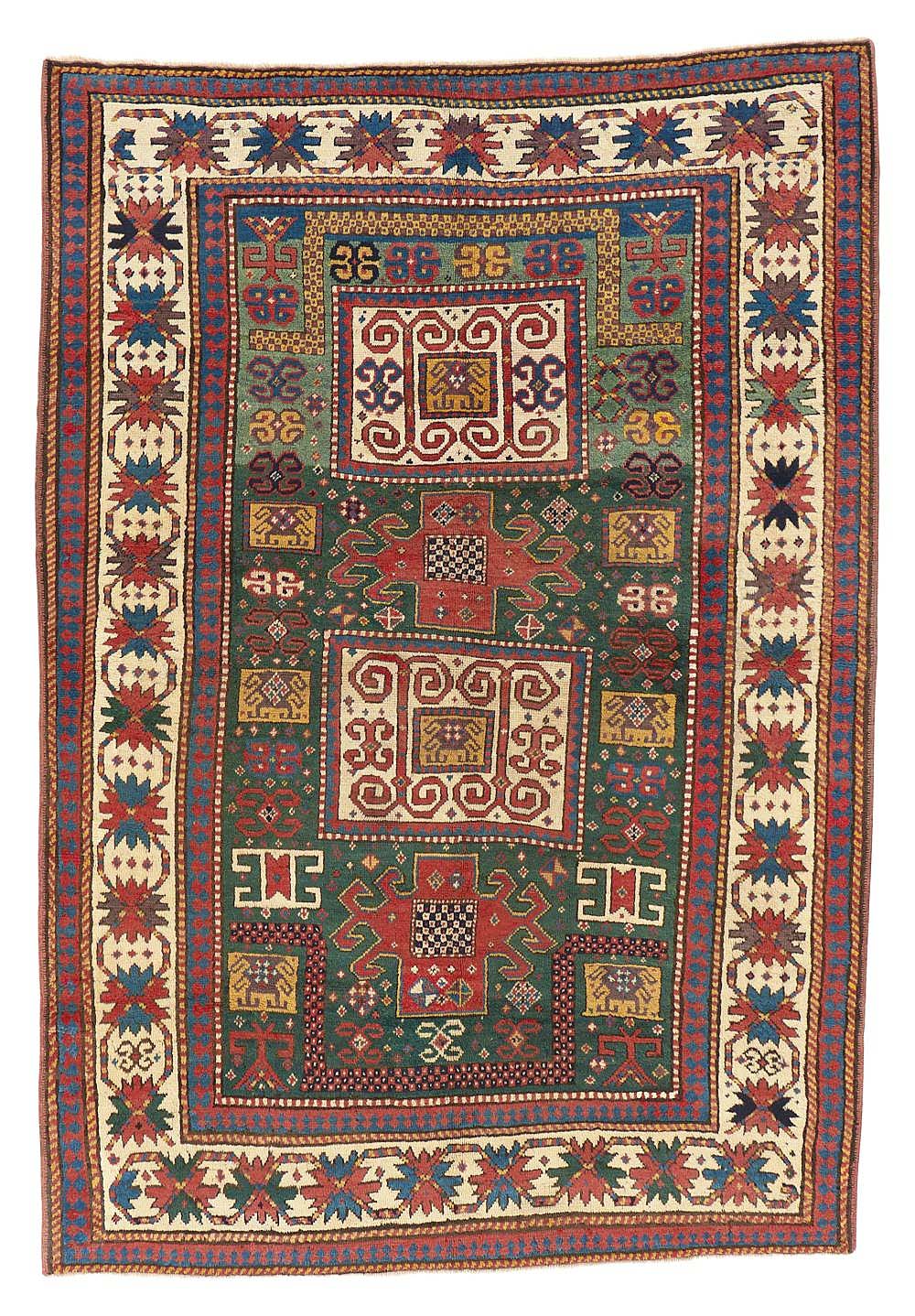
This 7-foot-8-inch-by-5-foot-4-inch Karatchoph Kazak prayer rug with double niche design, from the Caucasus, exceeded expectations at $10,625 ($7/10,000).
A Kurdistani Souj Baluk Goradis rug with colorful stylized furled leaves on a navy ground, more than doubled its high estimate with a $10,000 finish.
With few exceptions, most rugs were dated from circa 1850 to 1900. Outside of that date range, and one of the oldest rugs in the sale, was an early Nineteenth Century Anatolian rug that was offered second out of the gate and measured 9 feet 9 inches by 5 feet; it finished within estimate, at $5,313.
Grogan & Company will sell fine jewelry on November 2 and fine art on November 9.
Prices quoted include the buyer’s premium as reported by the auction house. For additional information, 617-720-2020 or www.groganco.com.

